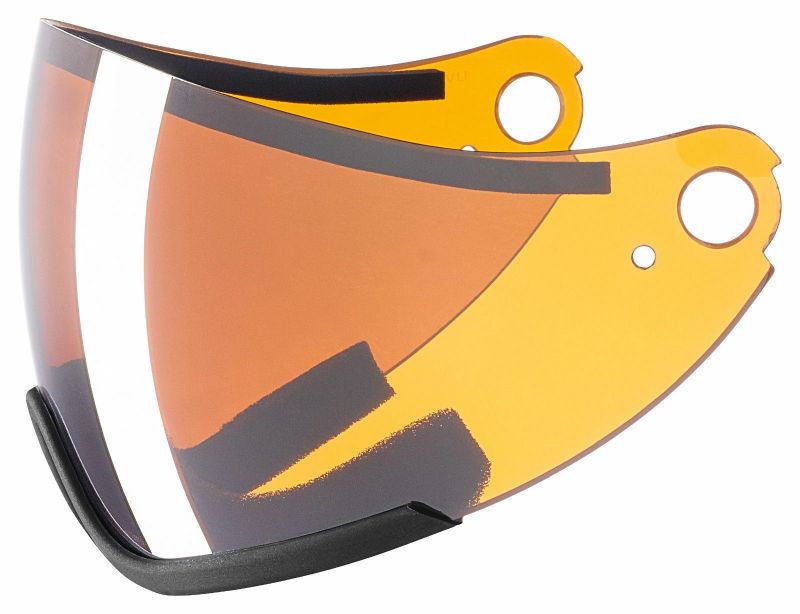Choosing the Best Lacrosse Helmet Visor for Protection and VisionChoosing the Best Lacrosse Helmet Visor for Protection and Vision
Lacrosse Helmet Visors Protect Players’ Eyes from Injury
Lacrosse is a fast-paced, high-impact sport where players routinely face contact from sticks, balls, and other players. Eye injuries are common due to the high speed of shots, possibility of deflections, and physical play. Wearing a polycarbonate lacrosse helmet visor certified to meeting safety standards by organizations like NOCSAE is critical to protect player vision and prevent eye trauma.
Studies show that approximately 20% of all lacrosse injuries impact the head and face. Despite mandatory helmet use, players remain vulnerable to sticks, balls, and elbows entering gaps in the helmet near the eyes. A sturdy visor acts as a shield to block these threats. Polycarbonate plastic offers high impact resistance to absorb blows without shattering or splintering.
Blunt force blows to the eye socket can rupture blood vessels, detach retinas, fracture eye socket bones, and cause hyphemas where blood fills the anterior chamber. Fast moving balls and deflected shots also risk penetrating eye injuries that can permanently damage vision. Visors protect against both blunt force and penetrating lacrosse eye traumas that could otherwise cause blindness.
Lacrosse experts, coaches, and governing bodies universally recommend wearing certified visors in practices and games. Clear polycarbonate with an anti-fog coating provides optimal visibility while robustly shielding eyes. Players should inspect visors regularly and replace any with scratches that compromise vision or impact resistance. Wearing a helmet visor is a simple way lacrosse players can defend vision health and prevent severe eye injuries.
Polycarbonate Lacrosse Visors Withstand Impacts Better Than Acrylic
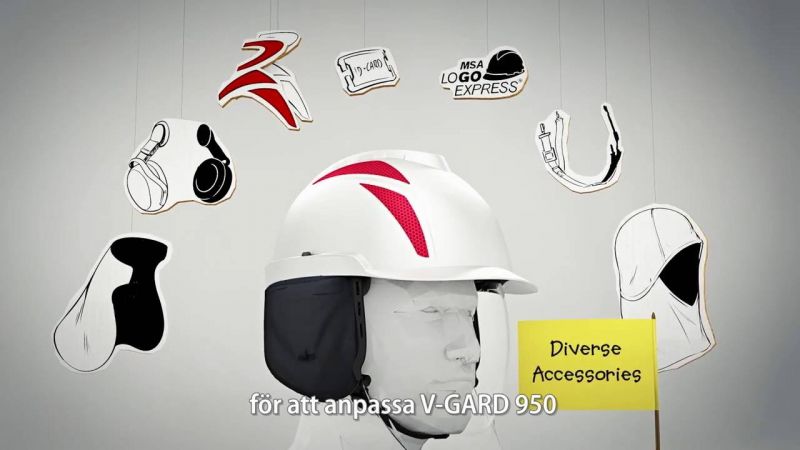
When selecting a lacrosse helmet visor for eye protection, the visor material matters. Polycarbonate plastic visors better withstand blunt force trauma from shots, sticks, and contact compared to acrylic options. Polycarbonate’s higher impact resistance makes it the top choice to safeguard vision.
Polycarbonate is a thermoplastic material containing carbonate groups. The intermolecular bonds between the long polymer chains resist cracking when flexed or struck. Polycarbonate lacrosse visors do not shatter on direct high speed ball impacts. This helps prevent penetrating eye injuries from shards that could permanently damage vision. Polycarbonate also absorbs more impact energy through elastic deformation, reducing injury risk from blunt force trauma.
Studies by organizations like NOCSAE test lacrosse helmet visors by firing balls at high velocities. Polycarbonate visors withstand these impacts and remain intact even at close range shots over 100mph. Acrylic plastic visors are more likely to crack or shatter when struck, creating a hazard. Polycarbonate also retains visibility better after impacts with fewer scratches compared to acrylic.
Polycarbonate has a higher melting temperature around 280°C compared to acrylic’s 160°C melt point. This allows polycarbonate to be mold injected to precise curvatures that closely fit helmet models. The molding process also creates smooth surfaces less prone to scratching that can interfere with vision. Acrylic requires machining to shape after forming, resulting in more surface imperfections.
Leading lacrosse visor brands like Cascade and Warrior only use polycarbonate for their visors. Polycarbonate has a proven track record protecting eyes in other high impact sports including hockey, football, basketball, and baseball. Before polycarbonate adoption, severe eye injuries were more common as acrylic visors failed to stop blows from leading to blindness. Polycarbonate remains the standard for protection decades later.
Lacrosse players should select helmet visors made from polycarbonate rather than acrylic plastics. Polycarbonate’s superior ability to absorb blows while remaining intact provides critical protection. Its smooth surfaces and mold injected precision shapes optimize fit and vision. While polycarbonate visors cost slightly more than acrylic, the added eye safety value makes polycarbonate the top lacrosse visor material choice.
Anti-Fog Lacrosse Visor Coatings Prevent Vision Obstruction

Lacrosse helmet visors with anti-fog coatings provide a clear view without vision blocking condensation buildup. Fogging visors compromise visibility and increase injury risks from diminished reaction time. Lacrosse players should select polycarbonate visors with permanent anti-fog properties.
Anti-fog coatings prevent the formation of tiny suspended water droplets on visor surfaces through hydrophilic and hydrophobic chemical interactions. Fogging occurs when condensing water molecules hydrogen bond with each other more strongly than the visor, causing them to scatter light.
Anti-fog agents change the surface energy to make condensing moisture interact more strongly with the visor than adjacent droplets. This allows the developing condensation layer to remain in a transparent smooth film rather than scattering light. Hydrophilic coatings work by being highly water attracting while hydrophobic types repel water entirely.
Another anti-fog mechanism involves surfactants that reduce the surface tension of forming condensate layers. Lower surface tension facilitates even spreading of moisture into an optical clear film. Durable anti-fog coatings utilize a combination of hydrophilic, hydrophobic, and surfactant based agents.
Spray on visor anti-fog treatments wear off over time with use, helmet friction, and cleaning. Lacrosse players should look for visors with permanent anti-fog properties built into the polycarbonate plastic. These maintain fog resistance far longer through the visor’s lifetime.
Warrior lacrosse pioneered an enduring anti-fog and anti-scratch coating technology called WarTech. Special plasma deposition permanently adheres anti-fog surfactants to polycarbonate visor surfaces at a nano scale level. Plasma activation allows the surfactants to bond directly with the plastic rather than resting on top where they can wear off.
Cascade lacrosse helmets use a proprietary permanent Dryline anti-fog coating. Positive charge deposition and plasma activation adhere hydrophobic and hydrophilic agents to the visor. Dryline achieves around a 700mV positive charge for robust fog prevention. This permanent integration resists wear off from friction.
Fogging visors increase risk of eye injuries by reducing visual reaction time in the fast paced lacrosse game environment. Before advanced permanent anti-fog coatings, players needed to repeatedly use spray treatments to maintain visibility. New technologies like WarTech and Dryline keep lacrosse visors fog free and optimally transparent for entire seasons of play without reapplying sprays.
Lacrosse athletes seeking the clearest visor views should look for polycarbonate shields featuring plasma bonded hydrophilic, hydrophobic, and surfactant coatings. Permanent integration maintains fog resistance far longer than temporary spray applications. Fog-free vision optimizes safety and performance on the field.
Ventilation Systems Prevent Fogging of Lacrosse Visors
Types of Eye Injuries Prevented by Lacrosse Helmet Visors
- Blunt force injuries (e.g., ruptured blood vessels, detached retinas)
- Fractures to the eye socket bones
- Hyphemas (blood filling the anterior chamber of the eye)
- Penetrating eye injuries from fast-moving balls or deflected shots
Given the potential severity of these injuries, it’s no surprise that lacrosse experts, coaches, and governing bodies universally recommend wearing certified visors during both practices and games. Clear polycarbonate visors with an anti-fog coating provide optimal visibility while robustly shielding the eyes from potential harm.
Polycarbonate vs. Acrylic: Why Material Matters in Lacrosse Visors
When it comes to selecting a lacrosse helmet visor, the material used in its construction is of paramount importance. Polycarbonate and acrylic are two common materials used in visor manufacturing, but they are not created equal in terms of protection and durability.
Why is polycarbonate the superior choice for lacrosse visors? The answer lies in its unique molecular structure and physical properties:

- Higher impact resistance
- Greater ability to withstand blunt force trauma
- Resistance to cracking when flexed or struck
- Superior ability to absorb impact energy through elastic deformation
These properties make polycarbonate visors significantly more effective at safeguarding players’ vision compared to their acrylic counterparts. In fact, studies conducted by organizations like NOCSAE (National Operating Committee on Standards for Athletic Equipment) have demonstrated the superior performance of polycarbonate visors in high-impact scenarios.
Polycarbonate Visors: Withstanding the Test of Impact
How do polycarbonate visors perform under extreme conditions? NOCSAE tests involve firing balls at high velocities directly at the visors. Remarkably, polycarbonate visors remain intact even when subjected to close-range shots exceeding 100 mph. This level of durability is crucial in preventing penetrating eye injuries that could result in permanent vision damage.
In contrast, acrylic plastic visors are more prone to cracking or shattering upon impact, potentially creating additional hazards for the player. Moreover, polycarbonate visors tend to retain better visibility after impacts, developing fewer scratches compared to acrylic alternatives.
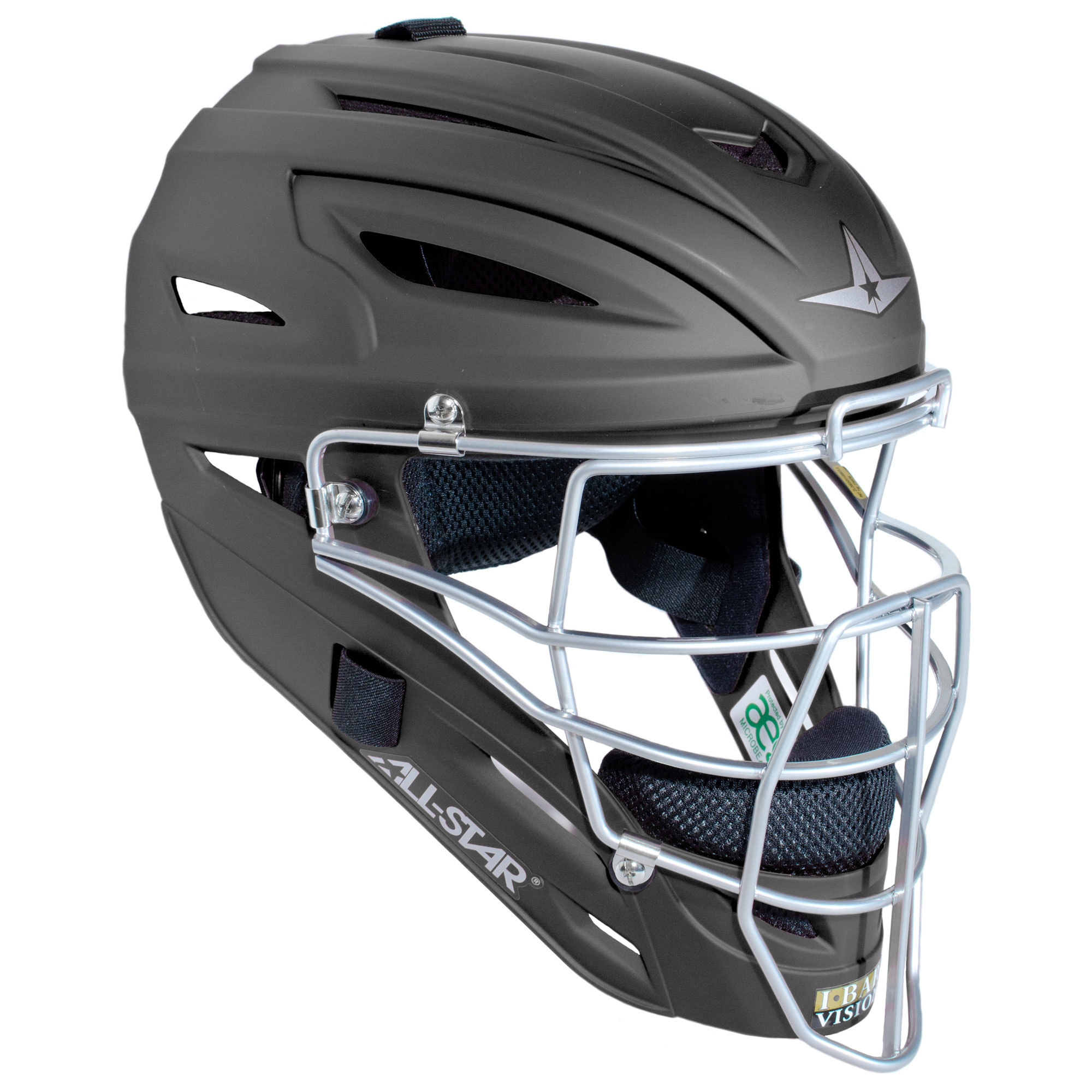
The Science Behind Polycarbonate’s Superior Performance
To truly appreciate the effectiveness of polycarbonate lacrosse visors, it’s essential to understand the science behind their superior performance. What makes polycarbonate such an ideal material for protective sports equipment?
Polycarbonate is a thermoplastic material containing carbonate groups. Its unique molecular structure features long polymer chains with strong intermolecular bonds. These bonds give polycarbonate its remarkable ability to resist cracking when subjected to flexing or impact.
How does this translate to real-world performance? When a polycarbonate visor is struck by a high-speed lacrosse ball or stick, it absorbs the impact energy through elastic deformation. This means the material temporarily deforms to absorb the blow, then returns to its original shape without breaking. This property is crucial in reducing the risk of injury from blunt force trauma.
Manufacturing Advantages of Polycarbonate Visors
Polycarbonate’s physical properties also offer significant advantages in the manufacturing process:

- Higher melting temperature (around 280°C) compared to acrylic (160°C)
- Ability to be mold injected to precise curvatures
- Creation of smooth surfaces less prone to scratching
These manufacturing advantages result in visors that fit helmet models more precisely and maintain better visibility over time. The mold injection process creates smoother surfaces that are less likely to develop vision-impairing scratches, further enhancing player safety and performance.
The Importance of Anti-Fog Coatings in Lacrosse Visors
Clear vision is paramount in lacrosse, where split-second decisions can make the difference between scoring a goal and sustaining an injury. This is where anti-fog coatings on lacrosse helmet visors play a crucial role.
Why are anti-fog coatings essential for lacrosse visors? The intense physical activity during a lacrosse game can lead to rapid temperature changes and increased humidity inside the helmet. Without proper anti-fog protection, this can result in condensation buildup on the visor, severely compromising the player’s visibility.
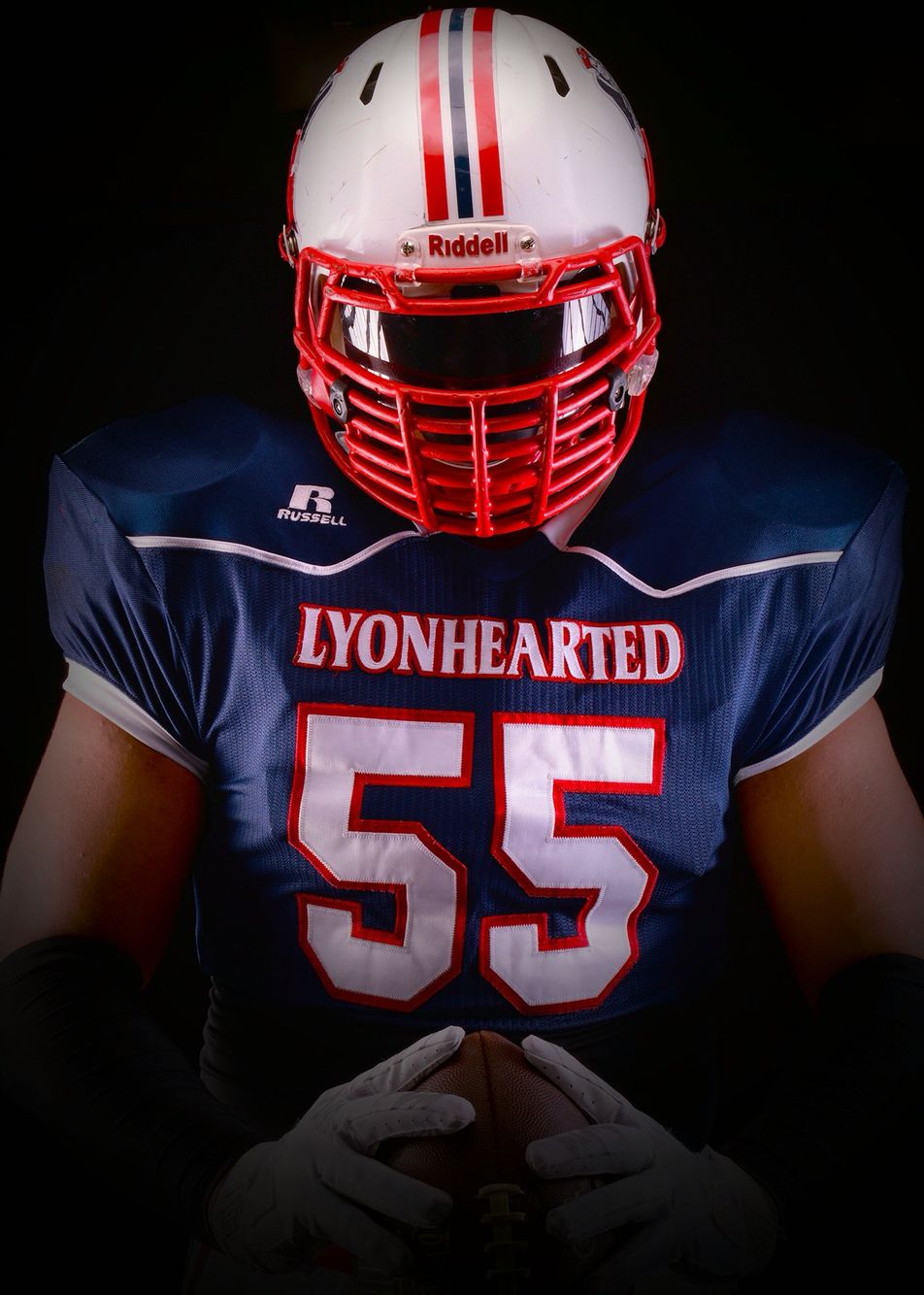
How do anti-fog coatings work to prevent this problem? These specialized coatings prevent the formation of tiny suspended water droplets on visor surfaces through a combination of hydrophilic and hydrophobic chemical interactions. By altering the surface energy of the visor, anti-fog coatings ensure that condensing water molecules spread out into a thin, transparent film rather than forming light-scattering droplets.
The Science of Anti-Fog Technology
To understand the effectiveness of anti-fog coatings, it’s helpful to examine the science behind fogging:
- Fogging occurs when water vapor in the air condenses on a cooler surface
- Normally, water molecules form stronger hydrogen bonds with each other than with the visor surface
- This causes the water to form droplets that scatter light, reducing visibility
- Anti-fog coatings change this dynamic, making the surface more attractive to water molecules
- As a result, water spreads out evenly instead of beading up, maintaining clarity
By preventing fog formation, these coatings ensure that players maintain clear vision throughout the game, reducing the risk of injuries and enhancing overall performance.
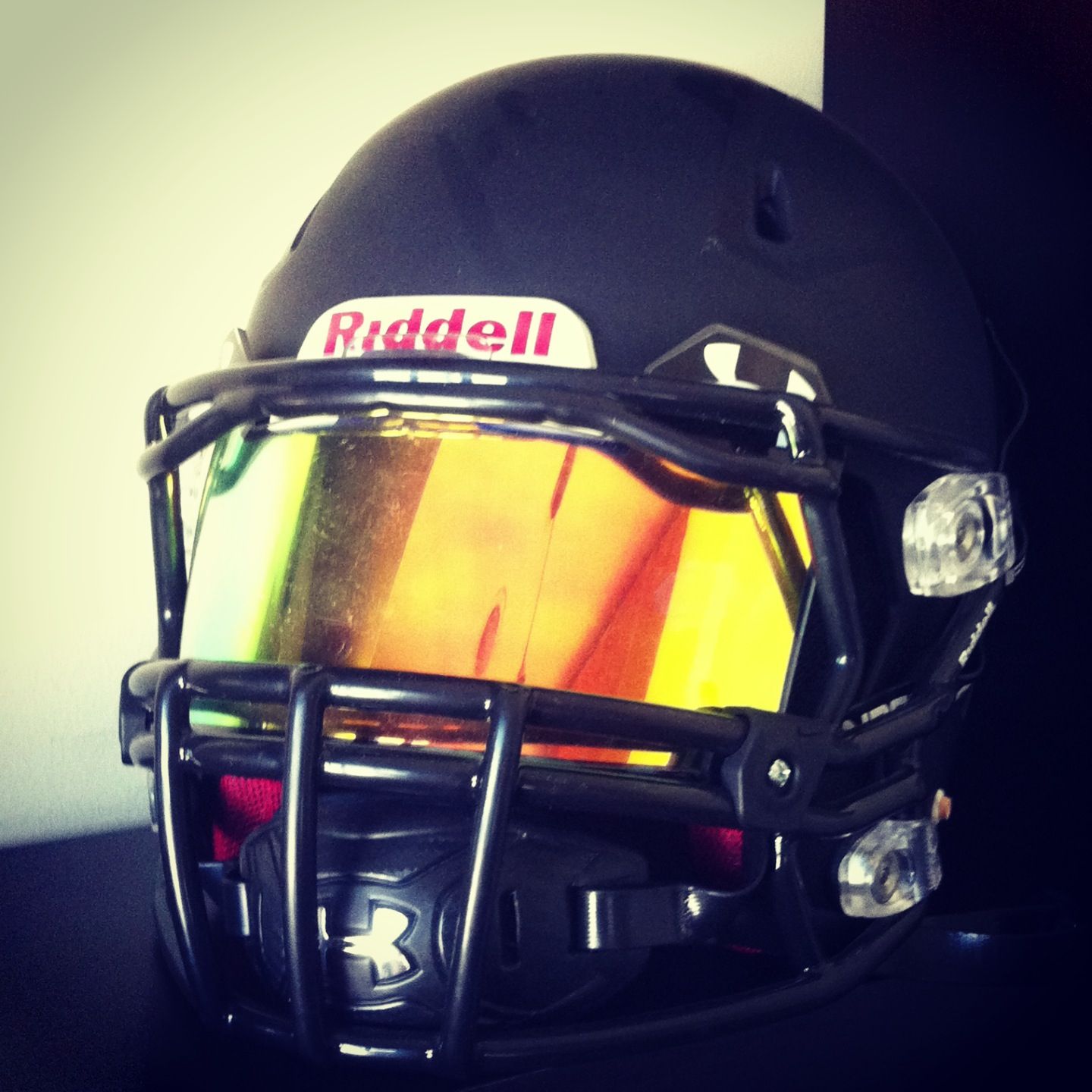
Top Features to Look for in a Lacrosse Helmet Visor
When selecting a lacrosse helmet visor, several key features can significantly impact both safety and performance. What should players and coaches prioritize when choosing a visor?
- Material: Opt for polycarbonate for superior impact resistance
- Certification: Look for NOCSAE certification to ensure safety standards are met
- Anti-fog coating: Choose visors with permanent anti-fog properties
- Fit: Ensure the visor is compatible with your specific helmet model
- Clarity: Select visors that offer optimal visibility without distortion
- UV protection: Consider visors that offer protection against harmful UV rays
- Scratch resistance: Look for visors with durable, scratch-resistant coatings
How do these features contribute to player safety and performance? A well-chosen visor not only protects against potential eye injuries but also enhances a player’s ability to track the ball, read the field, and react quickly to changing game situations.
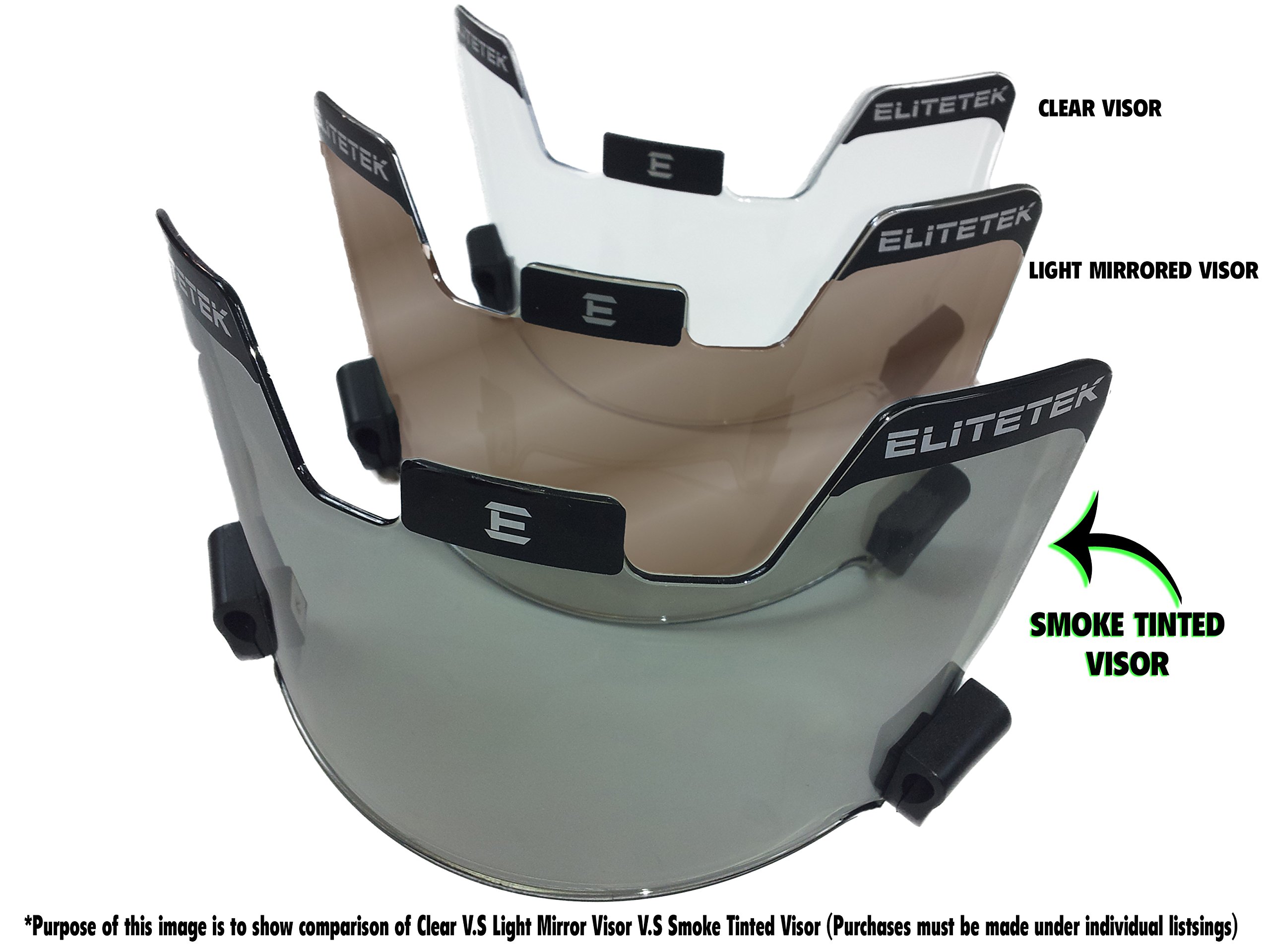
The Importance of Regular Visor Inspection and Maintenance
Even the best lacrosse helmet visor requires proper care to maintain its protective capabilities. Players should inspect their visors regularly for any signs of damage, such as scratches or cracks, that could compromise vision or impact resistance. Any visor showing signs of wear should be promptly replaced to ensure continued protection.
Leading Brands in Lacrosse Helmet Visor Technology
The lacrosse equipment market offers a range of high-quality visor options from reputable manufacturers. Which brands are at the forefront of lacrosse helmet visor technology?
- Cascade: Known for their innovative designs and advanced materials
- Warrior: Offers a range of visors with excellent impact resistance
- STX: Provides visors with superior clarity and anti-fog properties
- Under Armour: Combines style with high-performance protection
These leading brands consistently use polycarbonate in their visor designs, recognizing its superior protective qualities. They also invest heavily in research and development to continually improve their products, incorporating the latest advances in materials science and manufacturing techniques.
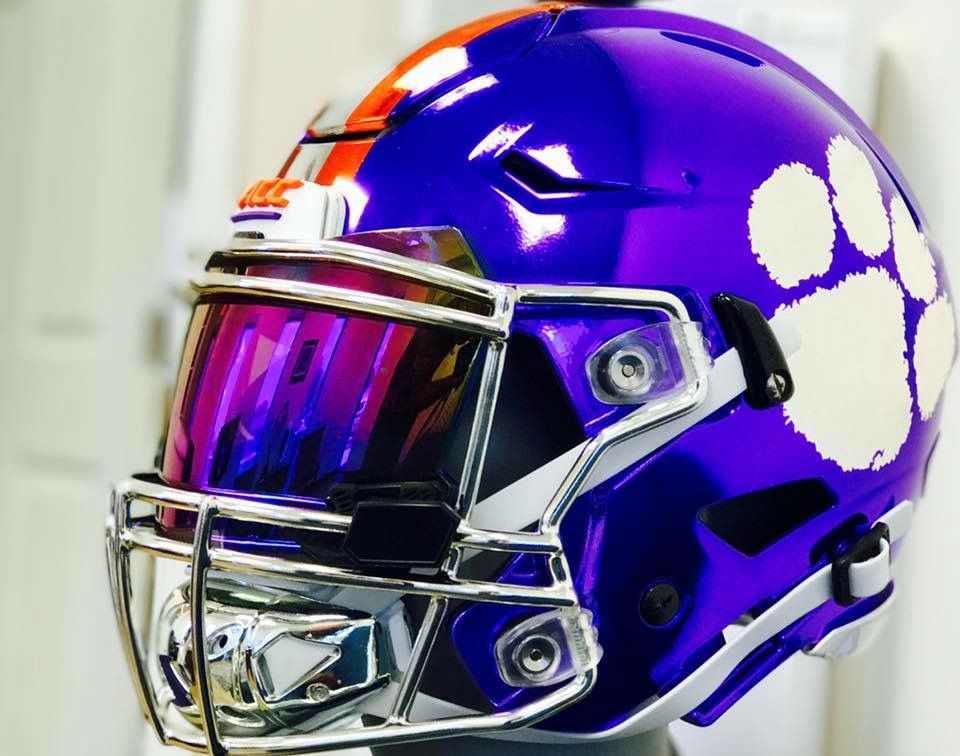
Customization Options in Lacrosse Visors
Beyond safety features, many players are interested in customization options for their lacrosse helmet visors. How do leading brands cater to this demand?
- Color tints: Options ranging from clear to various shades for glare reduction
- Mirrored finishes: Reflective coatings for reduced glare and added style
- Custom fits: Some brands offer visors tailored to specific face shapes
- Interchangeable systems: Allow players to switch visors based on conditions
While these customization options can enhance player comfort and style, it’s crucial to ensure that they don’t compromise the visor’s primary protective function. Players should always prioritize safety and visibility when selecting customized visors.
The Future of Lacrosse Helmet Visor Technology
As sports technology continues to advance, what can we expect for the future of lacrosse helmet visors? Ongoing research and development in materials science and manufacturing techniques promise exciting innovations in visor technology.
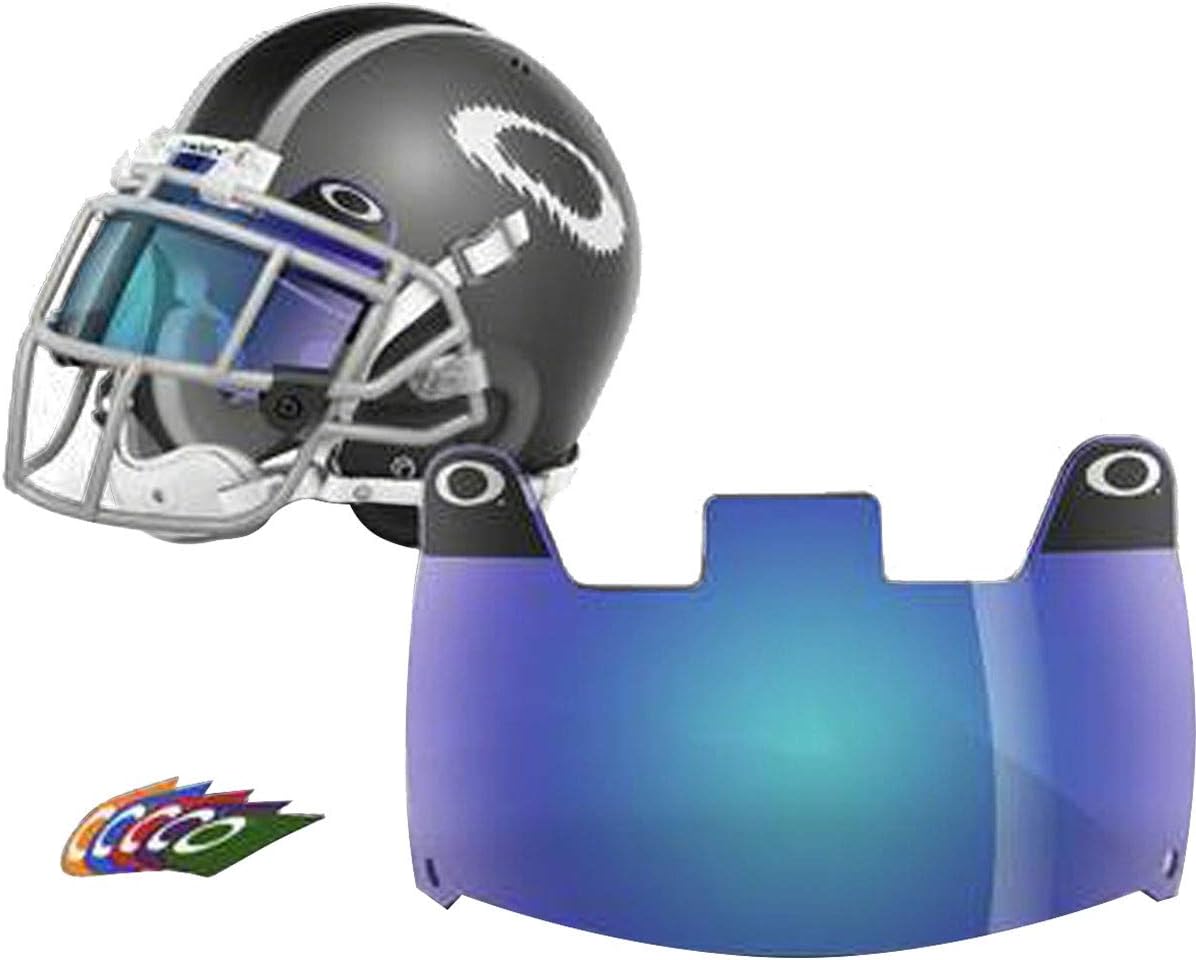
Some potential areas of advancement include:
- Smart visors with heads-up display capabilities
- Advanced impact-absorbing materials beyond polycarbonate
- Improved anti-fog and anti-scratch coatings
- Enhanced UV protection without compromising visibility
- Integration with other protective gear for comprehensive head protection
How might these advancements further improve player safety and performance? While the core function of protecting players’ eyes will remain paramount, future visors may offer additional features that enhance situational awareness, communication, and overall gameplay experience.
The Role of Artificial Intelligence in Visor Design
Artificial intelligence (AI) is playing an increasingly significant role in sports equipment design, including lacrosse helmet visors. How can AI contribute to better visor technology?
- Optimizing visor shape for improved aerodynamics and visibility
- Analyzing impact patterns to enhance protective capabilities
- Personalizing visor designs based on individual player data
- Simulating various game scenarios to test visor performance
By leveraging AI and machine learning algorithms, manufacturers can create visors that not only offer superior protection but also enhance player performance in ways previously thought impossible.
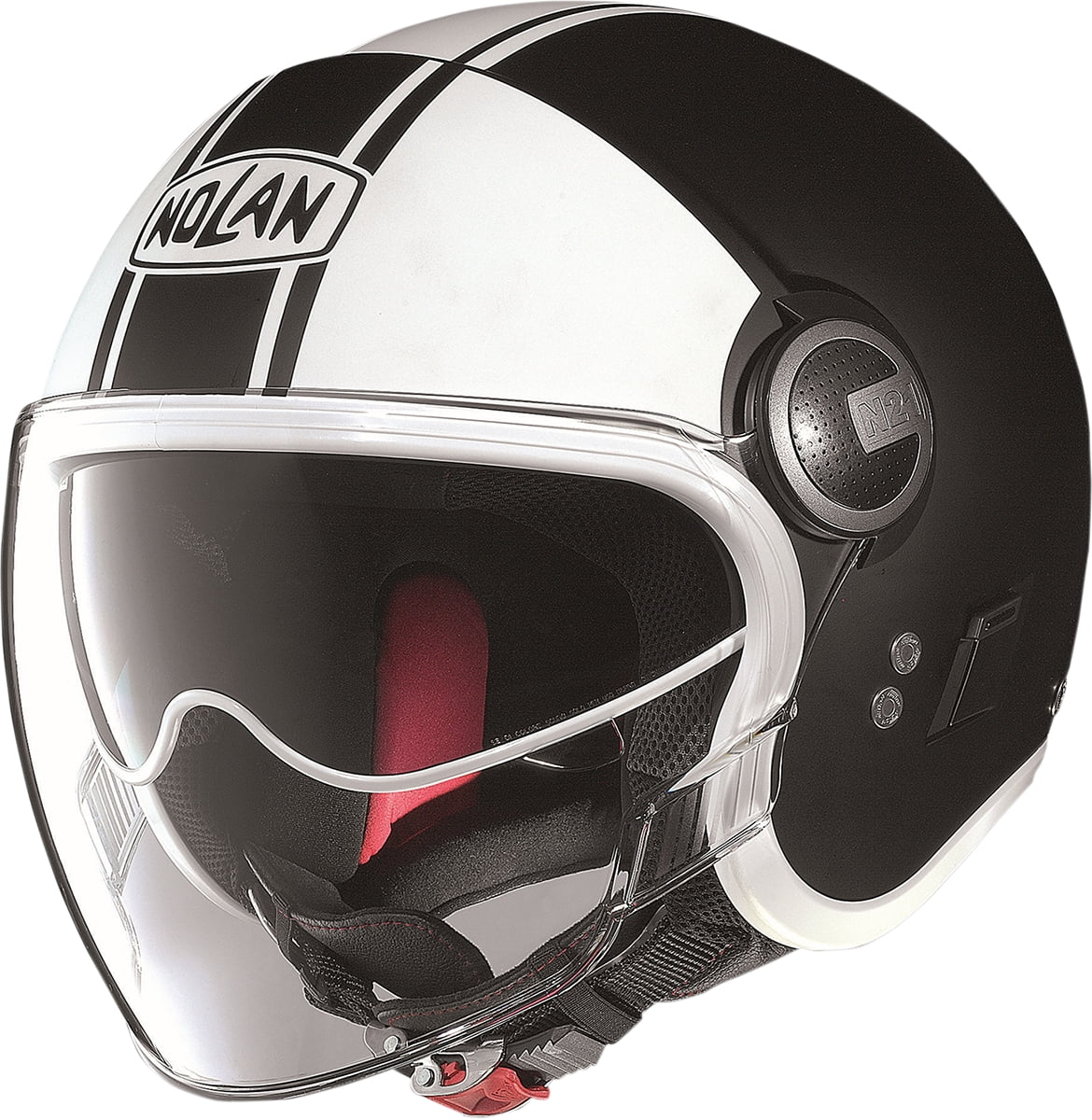
Lacrosse Helmet Visors Protect Players’ Eyes from Injury
Lacrosse is a fast-paced, high-impact sport where players routinely face contact from sticks, balls, and other players. Eye injuries are common due to the high speed of shots, possibility of deflections, and physical play. Wearing a polycarbonate lacrosse helmet visor certified to meeting safety standards by organizations like NOCSAE is critical to protect player vision and prevent eye trauma.
Studies show that approximately 20% of all lacrosse injuries impact the head and face. Despite mandatory helmet use, players remain vulnerable to sticks, balls, and elbows entering gaps in the helmet near the eyes. A sturdy visor acts as a shield to block these threats. Polycarbonate plastic offers high impact resistance to absorb blows without shattering or splintering.
Blunt force blows to the eye socket can rupture blood vessels, detach retinas, fracture eye socket bones, and cause hyphemas where blood fills the anterior chamber. Fast moving balls and deflected shots also risk penetrating eye injuries that can permanently damage vision. Visors protect against both blunt force and penetrating lacrosse eye traumas that could otherwise cause blindness.
Lacrosse experts, coaches, and governing bodies universally recommend wearing certified visors in practices and games. Clear polycarbonate with an anti-fog coating provides optimal visibility while robustly shielding eyes. Players should inspect visors regularly and replace any with scratches that compromise vision or impact resistance. Wearing a helmet visor is a simple way lacrosse players can defend vision health and prevent severe eye injuries.
Polycarbonate Lacrosse Visors Withstand Impacts Better Than Acrylic

When selecting a lacrosse helmet visor for eye protection, the visor material matters. Polycarbonate plastic visors better withstand blunt force trauma from shots, sticks, and contact compared to acrylic options. Polycarbonate’s higher impact resistance makes it the top choice to safeguard vision.
Polycarbonate is a thermoplastic material containing carbonate groups. The intermolecular bonds between the long polymer chains resist cracking when flexed or struck. Polycarbonate lacrosse visors do not shatter on direct high speed ball impacts. This helps prevent penetrating eye injuries from shards that could permanently damage vision. Polycarbonate also absorbs more impact energy through elastic deformation, reducing injury risk from blunt force trauma.
Studies by organizations like NOCSAE test lacrosse helmet visors by firing balls at high velocities. Polycarbonate visors withstand these impacts and remain intact even at close range shots over 100mph. Acrylic plastic visors are more likely to crack or shatter when struck, creating a hazard. Polycarbonate also retains visibility better after impacts with fewer scratches compared to acrylic.
Polycarbonate has a higher melting temperature around 280°C compared to acrylic’s 160°C melt point. This allows polycarbonate to be mold injected to precise curvatures that closely fit helmet models. The molding process also creates smooth surfaces less prone to scratching that can interfere with vision. Acrylic requires machining to shape after forming, resulting in more surface imperfections.
Leading lacrosse visor brands like Cascade and Warrior only use polycarbonate for their visors. Polycarbonate has a proven track record protecting eyes in other high impact sports including hockey, football, basketball, and baseball. Before polycarbonate adoption, severe eye injuries were more common as acrylic visors failed to stop blows from leading to blindness. Polycarbonate remains the standard for protection decades later.
Lacrosse players should select helmet visors made from polycarbonate rather than acrylic plastics. Polycarbonate’s superior ability to absorb blows while remaining intact provides critical protection. Its smooth surfaces and mold injected precision shapes optimize fit and vision. While polycarbonate visors cost slightly more than acrylic, the added eye safety value makes polycarbonate the top lacrosse visor material choice.
Anti-Fog Lacrosse Visor Coatings Prevent Vision Obstruction

Lacrosse helmet visors with anti-fog coatings provide a clear view without vision blocking condensation buildup. Fogging visors compromise visibility and increase injury risks from diminished reaction time. Lacrosse players should select polycarbonate visors with permanent anti-fog properties.
Anti-fog coatings prevent the formation of tiny suspended water droplets on visor surfaces through hydrophilic and hydrophobic chemical interactions. Fogging occurs when condensing water molecules hydrogen bond with each other more strongly than the visor, causing them to scatter light.
Anti-fog agents change the surface energy to make condensing moisture interact more strongly with the visor than adjacent droplets. This allows the developing condensation layer to remain in a transparent smooth film rather than scattering light. Hydrophilic coatings work by being highly water attracting while hydrophobic types repel water entirely.
Another anti-fog mechanism involves surfactants that reduce the surface tension of forming condensate layers. Lower surface tension facilitates even spreading of moisture into an optical clear film. Durable anti-fog coatings utilize a combination of hydrophilic, hydrophobic, and surfactant based agents.
Spray on visor anti-fog treatments wear off over time with use, helmet friction, and cleaning. Lacrosse players should look for visors with permanent anti-fog properties built into the polycarbonate plastic. These maintain fog resistance far longer through the visor’s lifetime.
Warrior lacrosse pioneered an enduring anti-fog and anti-scratch coating technology called WarTech. Special plasma deposition permanently adheres anti-fog surfactants to polycarbonate visor surfaces at a nano scale level. Plasma activation allows the surfactants to bond directly with the plastic rather than resting on top where they can wear off.
Cascade lacrosse helmets use a proprietary permanent Dryline anti-fog coating. Positive charge deposition and plasma activation adhere hydrophobic and hydrophilic agents to the visor. Dryline achieves around a 700mV positive charge for robust fog prevention. This permanent integration resists wear off from friction.
Fogging visors increase risk of eye injuries by reducing visual reaction time in the fast paced lacrosse game environment. Before advanced permanent anti-fog coatings, players needed to repeatedly use spray treatments to maintain visibility. New technologies like WarTech and Dryline keep lacrosse visors fog free and optimally transparent for entire seasons of play without reapplying sprays.
Lacrosse athletes seeking the clearest visor views should look for polycarbonate shields featuring plasma bonded hydrophilic, hydrophobic, and surfactant coatings. Permanent integration maintains fog resistance far longer than temporary spray applications. Fog-free vision optimizes safety and performance on the field.
Ventilation Systems Prevent Fogging of Lacrosse Visors
Well-designed lacrosse helmet visors utilize ventilation to reduce fogging from condensation buildup. Strategic air intake and exhaust ports channel airflow over visor surfaces, carrying moisture away. Effective ventilation synergizes with anti-fog coatings to optimize visibility.
Fogging occurs when the lacrosse athlete’s warm humid breath contacts the interior cold visor surface. As this moisture-laden air condenses into tiny droplets, it scatters light to obscure vision. Preventing fogging requires controlling airflow and moisture.
Intake vents on the helmet exterior allow cool dry outside air to flow into the helmet interior space. Exhaust vents above and below the visor give this air and internal humid air an exit path. Strategic vent placement facilitates airflow across the visor, wicking away condensing moisture.
Cascade lacrosse helmets utilize this approach with AirVent visors. Air channels on the side direct external airflow over the visor. Rear exhaust vents above and below the visor enhance moisture evacuation. Cascade’s ventilation system works synergistically with the Dryline anti-fog coating to keep vision clear.
Warrior lacrosse helmets feature venting on the Burn visor series to augment the Wartech anti-fog coating. Slits above and below the visor connect to helmet air channels that intake and exhaust air. This facilitates airflow across visor surfaces to evaporate moisture and prevent fog buildup.
New helmet and visor designs also use computational fluid dynamics (CFD) simulations to optimize ventilation channel shape and placement. CFD models air movement to design systems that maximize anti-fog airflow. Wider channels and strategic turns enhance moisture evacuation and refresh rate.
Players should test lacrosse helmet ventilation on the field to ensure compatibility. Most helmets integrate with their own branded visors to create a unified airflow system. Universal or generic visors can disrupt intended venting dynamics leading to more fogging.
Lacrosse athletes must keep vents and channels clear of obstructions that can block airflow. Built up sweat, dirt, and other debris increases risk of fogging by reducing moisture evacuation. Players should inspect and clean their helmet ventilation regularly.
Advanced lacrosse visors integrate both anti-fog coatings and engineered ventilation to provide fog free visibility. Airflow systems maintain the anti-fog performance longer by constantly wicking moisture away from coated lens surfaces. Optimal vision protection requires helmets and visors work together to direct air movement.
Tinted Lacrosse Visors Reduce Glare for Enhanced Vision
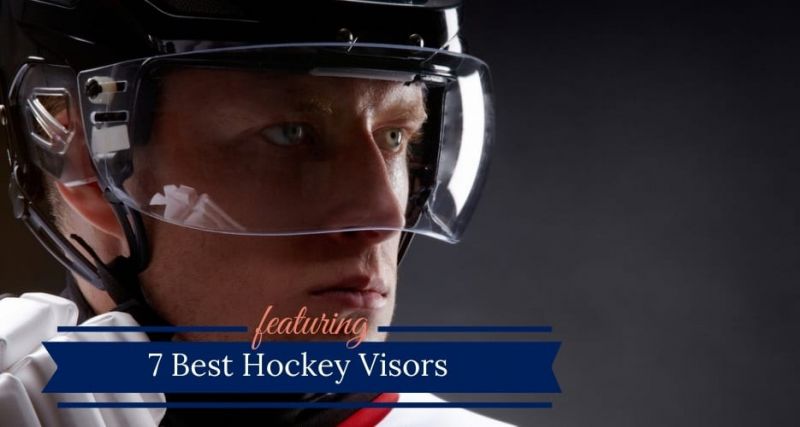
Adding tinting to lacrosse visors blocks glare from bright sunlight that can impair vision and cause eye strain. While clear polycarbonate shields offer maximal light transmission, tints optimize visibility in certain field conditions.
Tints work by selectively absorbing specific light wavelengths in the visible color spectrum. Popular lacrosse visor tints like smoke grey absorb more blue light. By filtering high energy shorter blue wavelengths, tints reduce glare from scattered sunlight without overly dimming light levels.
Glare occurs when bright ambient light overloads the eye’s adaptive mechanisms. The pupils constrict to limit overload, but scattered light can still overwhelm retinal photoreceptors. This causes discomfort, squinting, and compromised vision requiring added visor shading.
Smoke tints combining grey, brown, and amber hues effectively cut blue light and glare while maintaining good visibility. The darkened tint background also enhances contrast by dampening diffuse skylight that can wash out image details.
Yellow is another glare reducing tint popular in lacrosse visors and shooting glasses. Yellow allows red, orange, and green light transmission but absorbs violet, blue, and ultraviolet rays. Removing shorter wavelengths cuts glare with only modest dimming.
Tint darkness levels are measured by visible light transmission percentage (VLT%). Clear polycarbonate visors have a VLT around 90% meaning most light passes through. Light smoke tints transmit 75-80% of light; medium tints 50-75%; dark tints 25-50%.
Darker tints like black visors under 50% VLT significantly reduce luminance and should only be worn at night games. Light smoke around 80% VLT offers versatile daytime glare protection. Tint levels should match lighting conditions.
Changeable or photochromic lacrosse visors offer adjustable tint levels that self-darken when exposed to UV rays. However, most photochromic lenses have lower abrasion resistance that can compromise durability during play. Fixed tinted shields tend to be more impact resistant.
Polycarbonate itself blocks 100% of harmful UV light unlike some plastics. Visor UV protection avoids eye damage from intense reflected UV exposure like cataracts, keratitis, and macular degeneration.
Lacrosse players should consider light smoke tinted visors for day games and practices when glare issues occur. Clear polycarbonate shields provide the ultimate optical clarity for low light night games. Tints enhance comfort and maximize vision acuity when bright sunlight is present.
Strategically utilizing tinted and clear lacrosse visors based on lighting conditions provides essential glare protection tailored for the environment. Optimal vision and safety requires managing ambient luminance to avoid overload and eye fatigue.
Clear Lacrosse Visors Optimize Vision in Night Games and Low Light
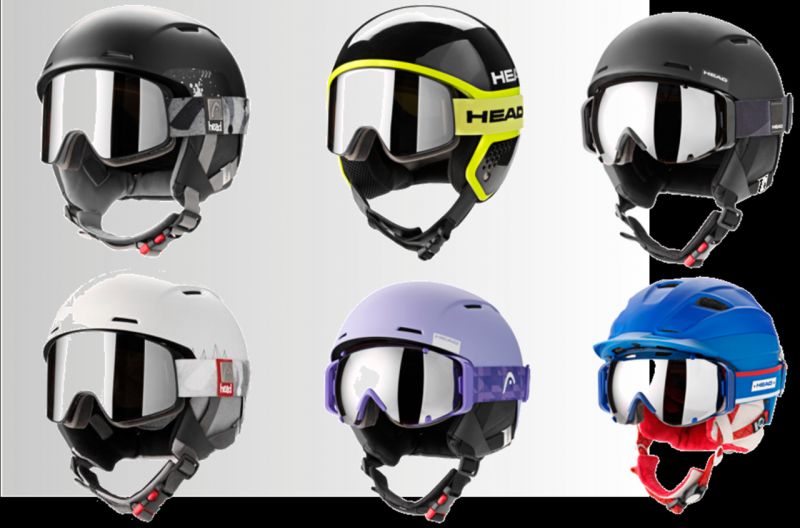
Lacrosse players should utilize clear polycarbonate visors without tinting for optimal vision during night games and low light conditions. Maximum light transmission through clear visors enhances visibility in dim settings.
Tinted visors that block glare during bright daylight can overly darken fields at night. As illumination drops, retinal light sensitivity rises to maximize rod and cone cell signals. Reduced luminance requires more light passage to avoid compromising acuity.
Untinted clear polycarbonate lacrosse visors have a visible light transmission (VLT) around 90%, allowing almost all light wavelengths to pass through. This preserves as much retinal illumination as possible for low light vision.
Yellow, smoke, and other tints absorb selective wavelengths to cut glare. But this filtering also dimensionally reduces total luminance reaching the eyes. Darkly tinted visors under 50% VLT block too much light for sufficient vision at night.
Clear visors also enhance contrast for picking up ball flight and other players against darker backgrounds. Added tinting can subtlety degrade image clarity and acuity in low light where maximal transmission is needed.
Switching to clear shields for night play optimizes safety by improving reaction time. Diminished acuity and contrast from excessively tinted visors slows responses to balls, sticks, and opponents.
Sudden changes between light and dark conditions also require clear shields. Moving from daylight to shadowed field areas is easier without tinting so eyes can quicker adjust to the lower light.
However, some ambient lighting is still needed for fully clear visors. Totally dark night conditions can require flipping up visors to maximize illumination since even optically clear plastic blocks some light.
Polycarbonate inherently filters 100% of UV rays so clear visors still protect eyes from harmful ultraviolet exposure at night. Lighter smoke tints also offer a compromise between glare protection and light transmission.
Having both clear and lightly tinted lacrosse visor shields available allows players to tailor protection to lighting. Clear polycarbonate optimizes visibility for safer performance in low luminance night play. Proper visor shade selection enhances vision acuity.
Properly Matching Lacrosse Visor Shape to Helmet Optimizes Fit and Safety
Lacrosse players seeking to maximize eye protection should select a polycarbonate visor engineered to seamlessly match their helmet model. Universal or generic visors can compromise fit, vision, and safety if not properly shaped.
Helmet and visor manufacturers design their branded shields to integrate with the specific contours of their lacrosse helmets. This optimizes curvature alignment for ideal clearance around the facemask and unobstructed sight lines.
Ill-fitting visors cause gaps that increase injury risk by allowing sticks or balls to intrude and contact eyes. Imprecise shapes also bend vision planes, limiting peripheral vision and awareness on the field.
Cascade lacrosse helmets utilize proprietary FitLite visor fittings only found on Cascade visors. This permits tighter curvature matching between shell and shield for enhanced protection.
Warrior lacrosse helmets feature unique flex notch patterns that allow their visors to follow the helmet contour better. This prevents distortion while fully protecting from forehead to chin.
Most helmet brands design quick release visor anchors that securely snap onto their helmets without tools. Generic visors typically lack compatible anchor parts preventing proper helmet attachment.
Lacrosse athletes should check visors for the helmet brand etched into the shield. Brand matching ensures an engineered shape for accurate mating and helmet integration. NOCSAE standards also require this labeling.
Players occasionally mix brands experimenting with used or borrowed helmets and visors. But even slight curvature mismatches alter protection, sight lines, and ventilation airflow that could fog the visor.
Universal or aftermarket lacrosse visors only come in generic pre-set shapes lacking brand-specific contours. At best these provide compromised fit. At worst they dangerously leave gaps while obstructing vision.
For full eye protection and optimal visibility, lacrosse players should always match the branded polycarbonate visor designed for their specific helmet model. Precision shaping enhances fit, helmet integration, airflow, and sight lines for maximized performance.
Properly Fitted Lacrosse Visors Stay Securely In Place For Safety
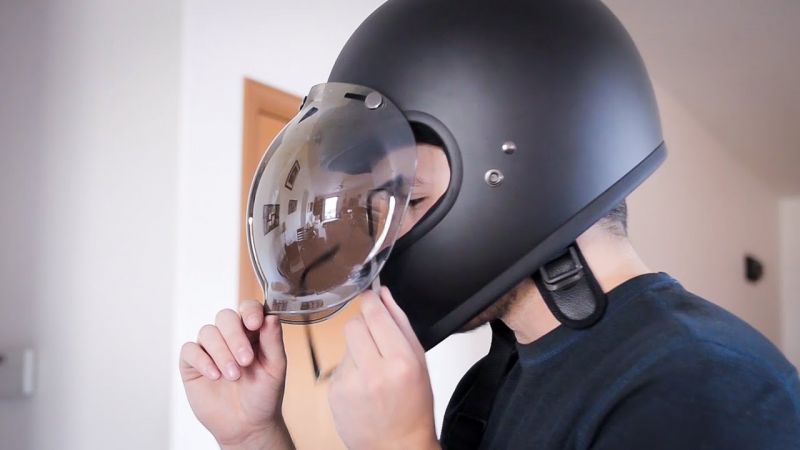
Optimizing lacrosse eye protection requires visors be properly fitted to stay firmly fixed in the intended position. Loose visors that shift out of alignment leave gaps that expose eyes to sticks and balls.
Helmet visor mounting systems typically involve anchor screws that clamp the shield into channels on the helmet brim. Keeping these screws adjusted to the proper torque ensures the visor remains locked down.
Lacrosse athletes should periodically check screw tightness by trying to jiggle the visor side-to-side and up-down. Any loosening allows unwanted movement risking the shield rotating outwards or upwards during play.
Newer quick-release visor anchors use interlocking tabs and snaps that click the shield into the helmet. These athletic field-friendly designs still need regular inspections for fit integrity as jarring checks can loosen the locks.
Ill-fitting visors also defeat integrated helmet ventilation intended to prevent fogging. Just a slight shift out of position can misdirect airflow leading to obscured vision from moisture condensation.
Polycarbonate lacrosse visors flex to absorb hard ball and stick impacts without breaking. But excessive flexing indicates a loose fit unable to maintain shape. This allows the shield to bend back exposing the eyes to contact.
Players should replace visor mounting screws that become stripped or lost to avoid compromising integrity. Carrying spare screws provides the ability to immediately address fit issues on the field before play resumes.
Lacrosse guidelines mandate wearing eye protection precisely fitted and secured during all practices and games. Field refs will remove players with obviously loose or out-of-position visors dangerous to vision.
Frequently inspecting lacrosse helmet visor fit and fixation maintains essential safety barriers. Athletes play harder knowing their eyes are fully encased behind securely fastened polycarbonate shields.
Taking time to regularly check and adjust visor screws or anchor locks prevents movement that could lead to eye injuries. A snugly fitted shield offers full high-speed ball and stick impact protection.
Proper Lacrosse Visor Mounting Screws Keep Shields Securely Attached

Lacrosse helmet visors rely on mounting screws inserted into the brim edge channels to remain fixed in place protecting the eyes. Using the manufacturer’s specified screws and maintaining proper torque keeps shields safely secured.
Most lacrosse helmets feature channels along the brim perimeter that interface with the visor edge lips. Screws threaded through holes in the channel plastic compress the visor lip to lock the shield in position.
Visor manufacturers like Cascade and Warrior design mounting screws specifically matched to their channel and slot dimensions. This optimizes clamping force so the polycarbonate visor won’t loosen but avoids overtightening that can crack the shield.
Aftermarket universal screws risk stripping plastic channels when tightened down or leaving unwanted play if not adequately torqued. Imprecise fit can also distort the helmet brim shape impairing protection.
Lacrosse visor screws require precise torque settings typically around 20-25 inch-pounds. Over tightening strains and deforms components while undertightening leads to vibration loosening during intense play.
New screws quickly reach optimal torque but reused screws or anchors compress and deform, requiring extra rotations. Players should discard and replace any degraded screws to maintain fit integrity.
Always use designated plastic visor screws which have wide blunt ends that prevent penetrating and damaging the polycarbonate. Sharper metal eyeglass screws can crack shields when installing.
Carrying extra OEM visor screws allows immediately replacing any lost mounting hardware before resuming play. Missing screws compromise integrity so athletes should never compete with only partially attached shields.
Following manufacturer specifications for lacrosse helmet visor screws, torque settings, and replacements ensures screws last long enough to maintain a tight fit. Proper mounting hardware keeps vision safely protected all season.
Scratched Lacrosse Visors Should Be Replaced For Optimal Visual Clarity
Lacrosse players need to regularly inspect polycarbonate shield visors and replace any with extensive scratching or damage that reduces visual clarity. Impaired vision from degraded visors increases risk of eye injuries.
The polycarbonate material used for lacrosse visors provides excellent impact resistance but still gets surface scratches from sticks, balls, and debris during routine play. Light scratching has minimal effect but deeper marks can refract light.
Visible scratches in the central vision zone critically interfere with clarity for seeing the ball and opponents on the field. Blurred or obscured vision slows reaction time and risks eye trauma.
Peripheral scratches stretch and distort incoming images that must track to the central focus area. This challenges the eye muscles’ ability to shift peripheral objects into clear view as play rapidly moves across fields.
Depth perception also suffers from scratched lacrosse visors that cannot accurately converge light from different angles into a unified image. Players struggle gauging distances when vision clarity declines.
Anti-fog coatings on damaged visor surfaces lose effectiveness more quickly. Imperfections give moisture more surface area to cling to, causing earlier fogging.
While polycarbonate won’t shatter like glass, deeper scratches and gouges still reduce the plastic’s impact absorption ability. This elevates the chance sticks or balls penetrating a weakened shield.
Lacrosse athletes should examine shields before each game and practice for new scratches. Frequent cleaning removes grit that causes scratching during play. Discarding visors after one season of use helps maintain optical integrity.
Fortunately, polycarbonate lacrosse visors only cost around $40-60 to replace. New shields provide optimally clear sharp vision that enhances enjoyment and safety in the fast paced sport.
Wise lacrosse players understand imperceptible vision clarity loss from scratched visors incrementally increases injury risks. Periodically changing shields maintains the visual acuity needed for protecting eyes in the high speed ball and body contact sport.
Lacrosse Visors Come In Various Style Options From Sporty to Classic Looks
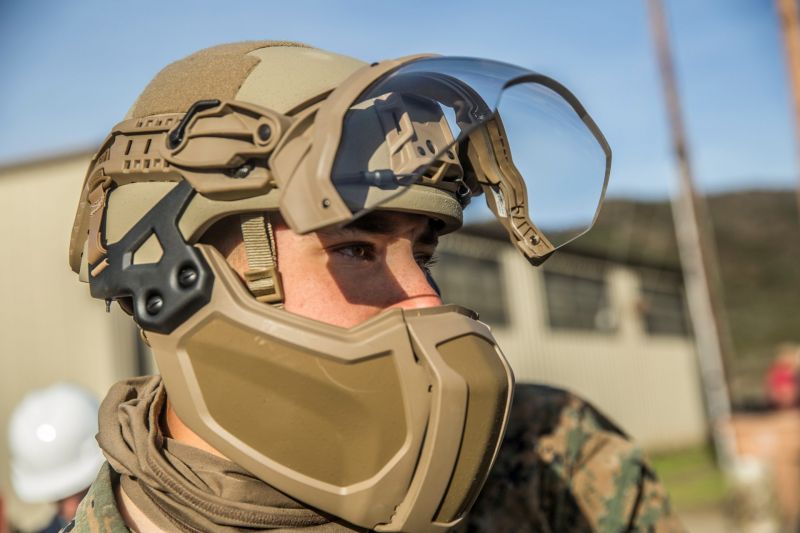
Polycarbonate lacrosse visors provide essential eye protection, and choices of tints and coatings allow matching player preferences for style, vision, and glare conditions. Sporty colored shields or classic black visors give customizable looks.
Smoke tinted visors in gray, amber, or yellow offer sporty styles, reducing glare while looking sleek. Light blue mirror shield coatings also provide an athletic appearance while enhancing contrast.
For an edgier style, some brands offer graphic printed visors featuring colorful designs, logos, and patterns overlaying the tint. These allow teams and players to showcase custom graphics for a unique game day look.
Switching between interchangeable visors creates versatile styles for changing preferences and lighting. Having a smoke tint, yellow tint, and clear shield provides options for different conditions and appearance needs.
Lacrosse visor shape also affects style based on how tightly the contours follow helmet geometry. More curved wraparound profiles give a streamlined integrated look versus flatter universal fit designs.
Most visors come in standard rectangular shapes but some models feature more squared-off edges or extra lower cutouts for expanding downward vision range. Custom painted edges can also add flair.
For players wanting a classic bold style, opting for solid black lacrosse visors projects an intimidating look. Black shields match any helmet color while blocking ambient light for glare-free vision.
Chrome mirrored coatings on lacrosse visors offer a retro vibe combining the high-tech mirror surface with an old school metal flake aesthetic. This stylishly reflects glare for a timeless elite look.
Clear polycarbonate shields provide an understated style, keeping the focus on helmet colors and designs without tinted lenses drawing attention. This gives helmets more prominence for their graphics and finishes.
Whether going for a sporty, edgy, or classic visor style, polycarbonate lacrosse shields offer durable eye protection. Players gain the benefits of scratch resistant impact protection with customized appearance options to suit team identities, personal tastes, and changing field conditions.
Lacrosse Governing Bodies Mandate Eye Protection Visor Rules
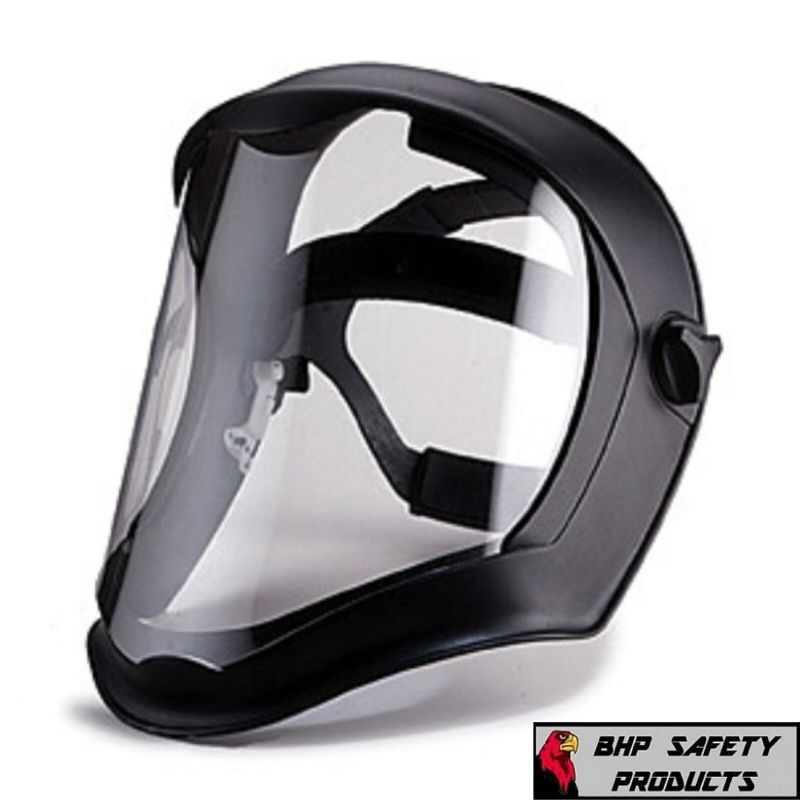
Major lacrosse governing organizations like the NCAA and NFHS require properly fitted visors on helmets to protect athlete vision and prevent injuries during sanctioned play. Strictly adhering to visor rules keeps the sport safe.
NCAA lacrosse mandates players wear helmets with manufacturers’ supplied polycarbonate facemasks and vision protection shields meeting NOCSAE standards. This guards eyes from ball, stick, elbow and hand contact causing trauma.
The NCAA only allows tinted visors if medically prescribed to treat light sensitivity conditions. Otherwise clear polycarbonate provides optimal ball tracking vision. Team doctors must authorize medical tints.
High school NFHS boys’ and girls’ lacrosse rules also require facemasks and shatter resistant visors able to withstand impacts. Visors cannot restrict vision and must adhere securely to helmets without movement risk.
NFHS rules specify visors must attach to designated helmet anchor points using integrated snaps or screws. Tape, elastic bands, or other makeshift fasteners increase danger of shifting leading to gaps.
US Lacrosse establishes protective equipment guidelines including certified eye shields properly secured per manufacturer instructions. They advise against modifying or custom drilling visor anchor points.
Youth leagues governed by US Lacrosse like the US Club Lacrosse Youth Council require age appropriate NOCSAE helmets withOEM facemasks and secure eye shields that don’t move, detach, or block vision.
Coaches and referees ensure visor rules enforcement, inspecting all equipment before competition. Athletes with non-compliant, altered, or defective gear must immediately fix issues or sit out contests.
Lacrosse stakeholders uniformly recognize visors’ essential role blocking eye area gaps in helmets and facemasks. Players must adhere to sport visor guidelines, avoiding injury risks from unsafe modifications or improper fit compromising protection.
Lacrosse Visors Must Meet Safety Certification Standards Like NOCSAE
To ensure lacrosse eye protection performance, visor manufacturers must have shields certified by standards organizations like NOCSAE to prove impact resistance capabilities. Players should only use tested visors.
NOCSAE (National Operating Committee on Standards for Athletic Equipment) conducts laboratory testing shooting balls at lacrosse masks and visors. Certified products must prevent penetration while absorbing set force levels under rigorous conditions.
During testing, lacrosse balls are propelled up to 120 mph at visors from as close as 60 inches. The shields cannot crack or fail, confirming ability to withstand severe game impacts without breaking.
NOCSAE also analyzes how facemasks and visors work together to verify no gaps exist that would allow ball or stick intrusion to injure eyes. Integrated products must ensure comprehensive protection.
Certified lacrosse visor products receive NOCSAE tags and logos verifying successfully passing research lab testing. Athletes looking for the highest protective quality should only use NOCSAE approved gear.
In addition to NOCSAE, lacrosse visors may also undergo testing by HECC, an independent sports equipment certification group. HECC developed lacrosse specific standards and procedures in conjunction with NOCSAE.
ASTM International’s F803 standard provides another US testing methodology for eye protectors including visors. Certification proves capacity to block a 0.015 inch steel ball at 150 ft/sec velocities without penetration.
Reputable lacrosse manufacturers strive for multiple certifications to provide assurance their visors meet all major safety organization criteria. This redundancy improves quality control and consumer confidence.
Lacrosse players, parents, coaches, and leagues should verify visors exhibit NOCSAE logos and certification claims before purchasing shields or allowing use. Proper standards testing delivers proven protection.
Top Lacrosse Visor Brands For Protection: Warrior, Cascade, STX, and Schutt
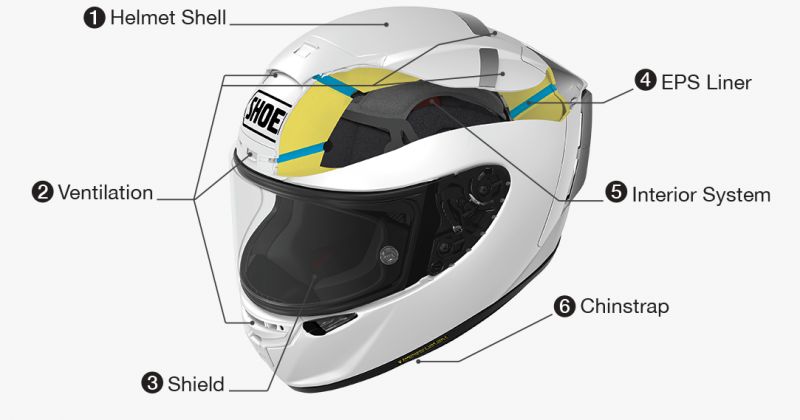
Leading lacrosse helmet and equipment manufacturers produce branded visors engineered specifically to integrate with their helmet models. Top lacrosse visor brands include Warrior, Cascade, STX, and Schutt.
Warrior visors feature excellent impact protection and anti-fog coatings optimized to fit their lacrosse helmets. Their Wartech coating combines hydrophobic, hydrophilic, and anti-scratch surfactants for lasting fog and scratch resistance.
Cascade’s lacrosse visors utilize patented Fitlite technology to securely anchor shields flush to their helmets. Performant polycarbonate material plus Dryline anti-fog treatments deliver lasting visual clarity and protection.
STX constructs lacrosse visors from virtually indestructible polycarbonate with the contours shaped precisely for their helmet lines. This avoids impediments creeping into vision peripheries during intense on-field play.
Schutt produces optically pure molded polycarbonate lacrosse visors masterfully formed to match their helmet curvatures. Advanced impact absorption prevents fracturing while keeping vision free from distortion.
All major lacrosse helmet brands invest significantly in visor technology for protecting athletes’ vulnerable eyes during high velocity stick checks, close range shots, and physical jostling. Their visors endure rigorous laboratory testing to earn key certifications like NOCSAE.
Less expensive generic or non-OEM lacrosse visors lack specifically engineered shaping to seamlessly integrate with helmet brands. The resulting loose fit leaves gaps while their dubious durability offers uncertain protection.
Savvy lacrosse players avoid “one size fits all” generic visors that compromise fit and视力tegrity. Opting instead for helmets and branded shields designed in unison to deliver uncompromising eye safety.
Lacrosse athletes seeking the highest performing visors choose reputable branded models over inferior discounted alternatives. Your eyes deserve the full protection only integrated helmets and company engineered OEM visors can provide.
